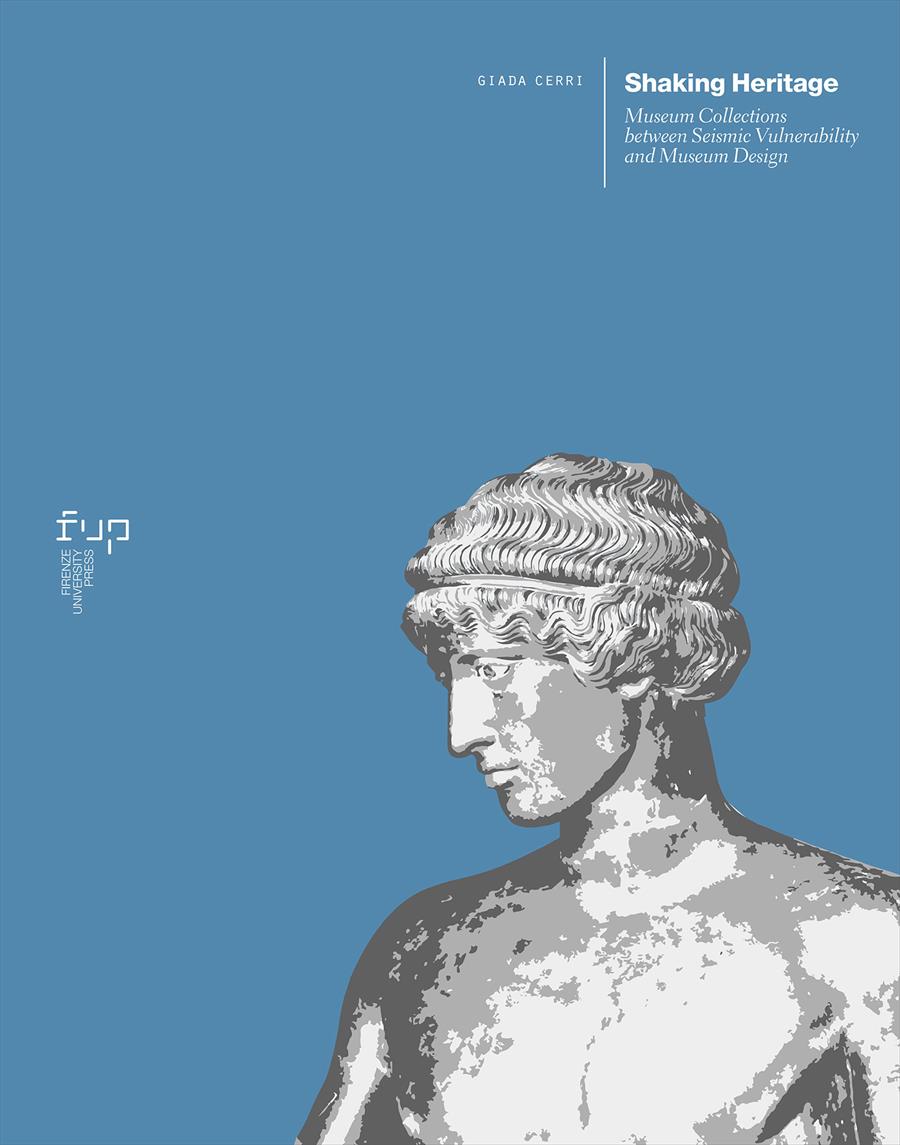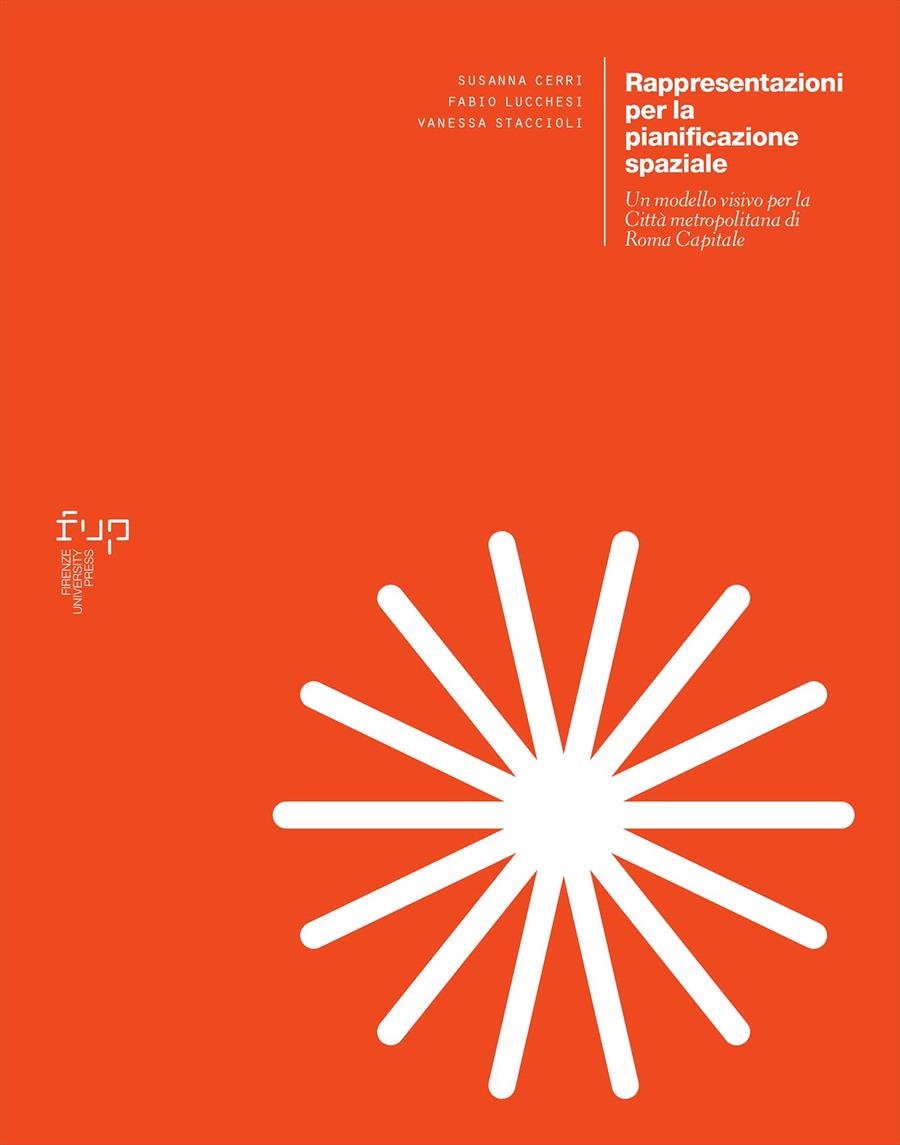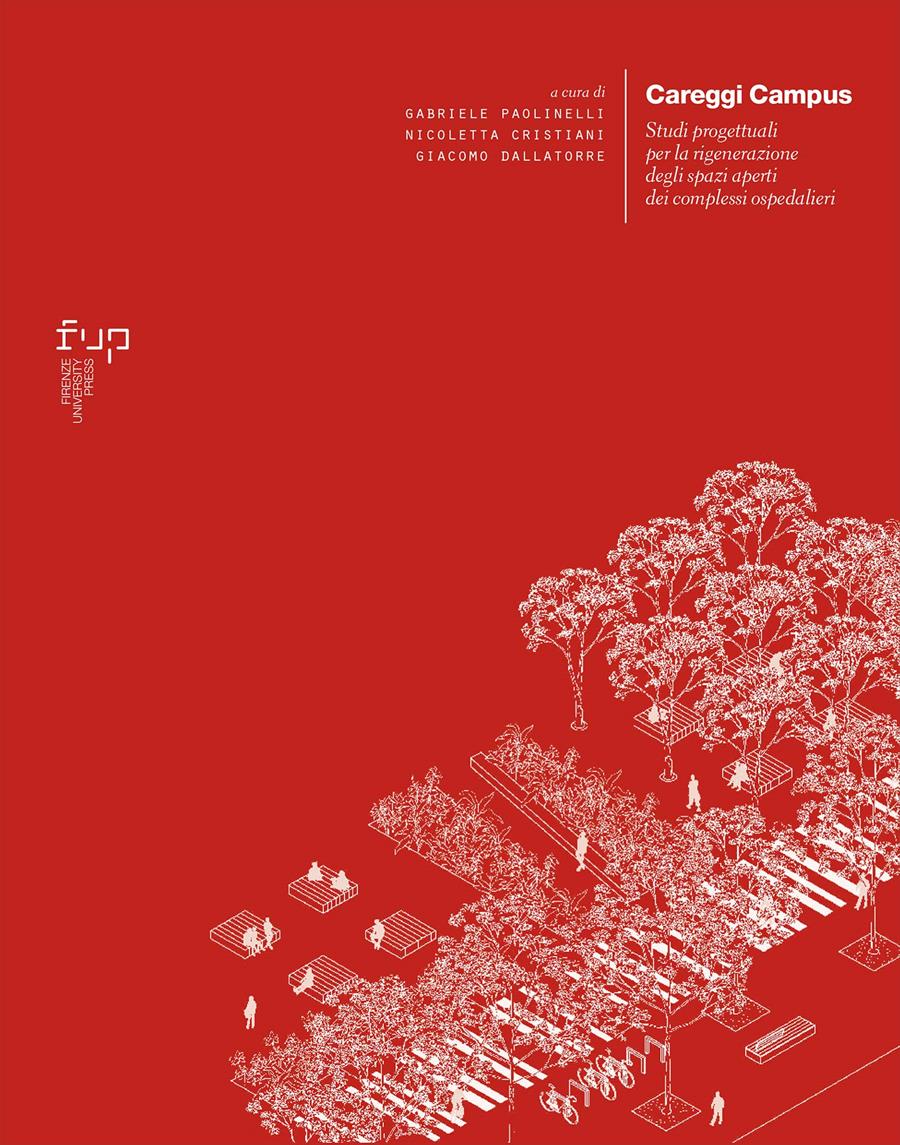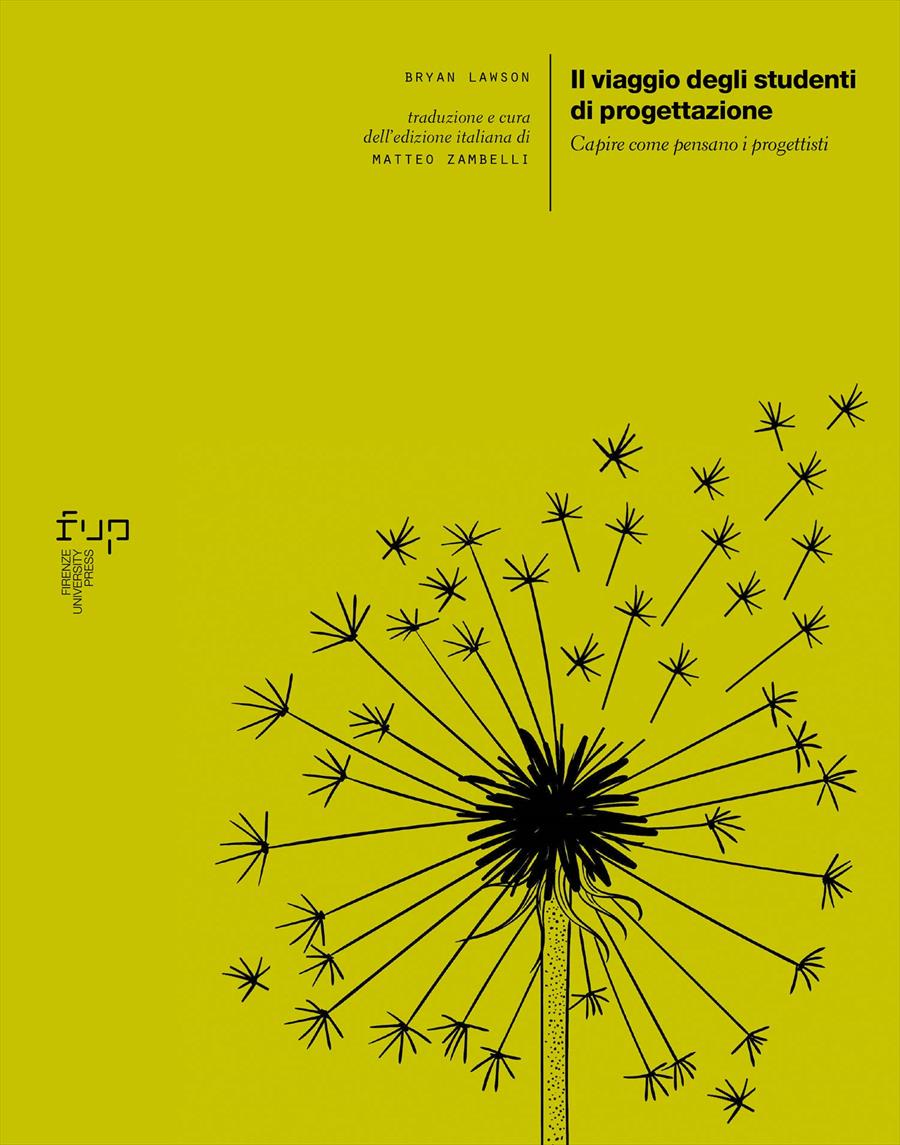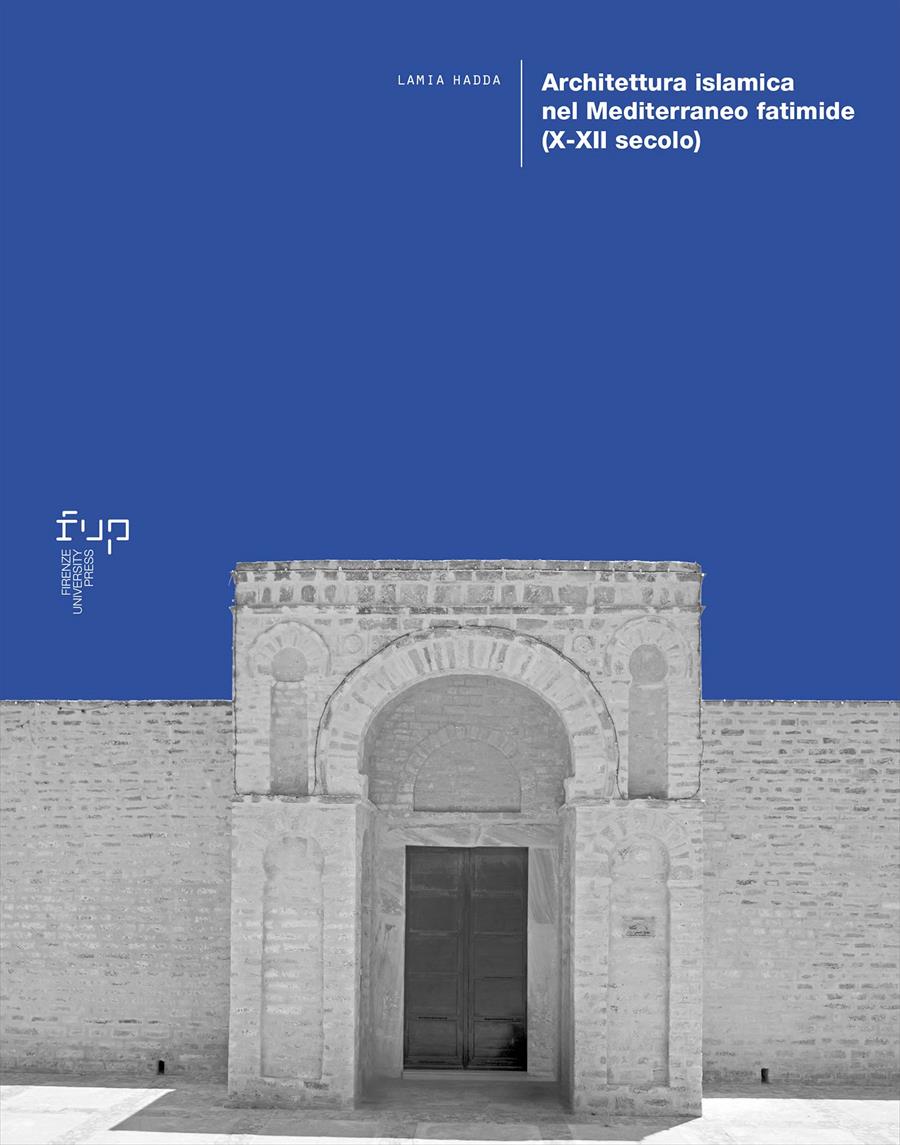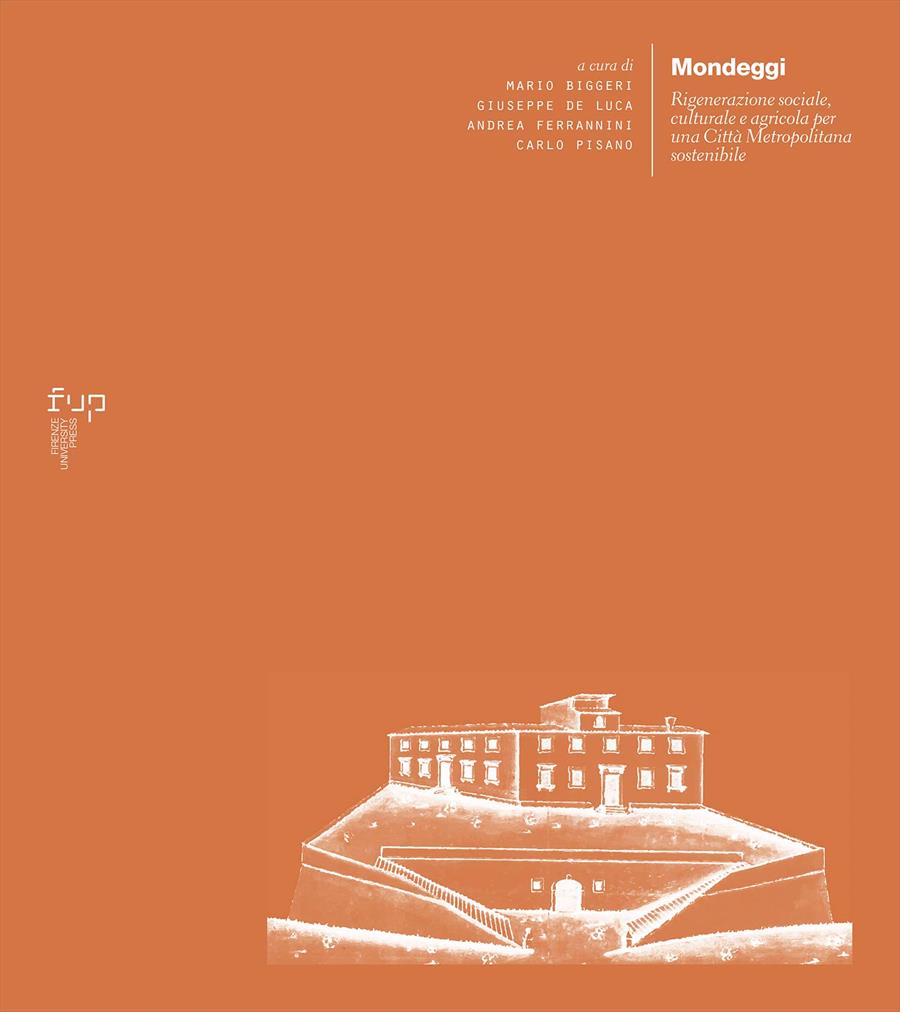Shaking Heritage
Museum Collections between Seismic Vulnerability and Museum Design
- Giada Cerri,
Any moment the earth can shake, but we do not know when or where. If it happens, our Heritage might be in danger. Shaking Heritage addresses the topic of the seismic vulnerability of museum collections. It develops a way to assess the seismic risks for movable Heritage, proposing a synthetic method to rate the vulnerable settings. It discusses the necessity of integrating museography and anti-seismic solutions for museums and exhibitions, and studies exhibit solutions that would improve the seismic safety of collections and setups. It stresses the necessity of constructing shared guidelines and policies for the safety of the movable Heritage. Shaking Heritage is a step forward in acknowledging the importance of the anti-seismic culture among museum institutions and researchers.
- Keywords:
- Museography,
- Exhibition Design,
- Seismic Risk Assessment,
- Earthquake Hazard Prevention and Mitigation,
- RESIMUS,
- DOI: 10.36253/978-88-5518-491-5
- Series: Ricerche. Architettura, Pianificazione, Paesaggio, Design
- Scientific Board
- Language: English
- Subjects: Architecture
- Download PDF
-

- © 2021 Author(s)
- CC BY-NC-SA 4.0
University of Florence, Italy - ORCID: 0000-0003-3792-4568
- AA.VV. 1990, Fare un Museo. Progetto Leonardo, Bologna.
- AA.VV. 2009, Linee guida per la riduzione della vulnerabilità di elementi non strutturali arredi e impianti. Presidenza del Consiglio dei Ministri, Dipartimento della Protezione civile.
- AA.VV. 2016, Charter of Rome on Resilience of Art Cities to Natural Disaster.
- Agbabian M. S. et al. 1991, ‘Evaluation of Earthquake Damage Mitigation Methods for Museum Objects’, Studies in Conservation, 36(2), pp. 111–120. DOI: 10.1179/sic.1991.36.2.111
- Agbabian M. S. et al. 1988, ‘Seismic damage mitigation concepts for art objects in museums’, in IX World Conference on Earthquake Engineering. Tokyo-Kyoto.
- Alberti M., Solera, G., Tsetsi, V. 1994, La città sostenibile. Franco Angeli Editore, Milano.
- Albini F. 2005, ‘Le mie esperienze di architetto nelle esposizioni in Italia e all’estero’, ried. in Casabella 730(2005), pp. 9-11.
- Ambrose T., Paine C. 1993, Museum basics. ICOM.
- Anastasiadis A. 2013, ‘New code site classification, amplification factors and normalized response spectra based on a worldwide ground-motion database’, Bulletin of Earthquake Engineering, 11, p. 925. DOI: 10.1007/s10518-013-9429-4
- Andre L., Durksen T., Volman M. L. 2017, ‘Museums as avenues of learning for children: a decade of research’, Learning Environ Res, 20(47–76). DOI: 10.1007/s10984-016-9222-9
- Archer, B. 1995, ‘The Nature of Research’, Co-Design, January, pp. 5–13.
- Augusti G., Ciampoli M., Airoldi L. 1992, ‘Mitigation of seismic risk for museum contents an introductory investigation’, in Balkema AA (ed.) 10th world conference on earthquake engineering, Rotterdam. Madrid, pp. 5995–6000.
- Augusti G., Ciampoli M. 1993, ‘Riduzione del rischio sismico per gli oggetti d’arte. Manutenzione e Recupero nella Città Storica’, in Atti del I Convegno Nazionale ARCo (Associazione per il Recupero del Costruito), Roma.
- Baggio S. et al. 2015. ‘Seismic isolation technique of marble sculptures at the Accademia Gallery in Florence: numerical calibration and simulation modelling’, Bulletin of Earthquake Engineering, 13(9), pp. 2719–2744. DOI: 10.1007/s10518-015-9741-2
- Bagnéris M. et al. 2017, ‘A complete methodology for the mechanical diagnosis of statue provided by innovative uses of 3D model. Application to the imperial marble statue of Alba-la-Romaine (France)’, Journal of Cultural Heritage, 28, pp. 109–116. DOI: 10.1016/j.culher.2017.05.002
- Basso Peressut L. 2005, Il museo moderno: architettura e museografia da Auguste Perret a Louis I. Kahn. Lybra Immagine, Milano.
- Beltramini, G., Forster, K.W., Marini P. (eds.) 2000, Carlo Scarpa. Mostre e musei 1944-1976. Case e paesaggi 1972-1978. Electa, Milano.
- Bertelà G. G., Vaccari M. G. 2013, Museo Nazionale del Bargello. La guida ufficiale. Giunti, Firenze. DOI: 10.1016/j.culher.2011.06.005.
- Berto L. et al. 2012, ‘Assessment of seismic vulnerability of art objects: The “Galleria dei Prigioni” sculptures at the Accademia Gallery in Florence’, Journal of Cultural Heritage, 13(1), pp. 7–21. DOI: 10.1016/j.culher.2011.06.005.
- Bizot Group 1995, ‘General Principles on the Administration of Loans and Exchange of Works of Art Between Institutions’, (July 1995).
- Bollo A. 2008, I pubblici dei musei. Conoscenza e politiche. Franco Angeli, Milano.
- Borri A., Grazini A. 2006, ‘Diagnostic analysis of the lesions and stability of Michelangelo’s David’, Journal of Cultural Heritage, 7(4), pp. 273–285. DOI: 10.1016/j.culher.2006.06.004.
- Bramerini F., Castenetto S. (eds) 2014, Condizione limite per l’emergenza (CLE). Betmultimedia, Roma.
- Bucci F. and Rossari A. (eds.) 2005, I musei e gli allestimenti di Franco Albini. Electa, Milano.
- C. N. VV. F. - Corpo Nazionale dei Vigili del Fuoco 2010, ‘Vademecum STOP - Schede delle opere porvisionali per la messa in sicurezza post-sisma da parte dei Vigili del Fuoco’. Servizio Documentazione e Relazioni Pubbliche del Dipartimento dei Vigili del Fuoco del Soccorso Pubblico e della Difesa Civile, Roma.
- Caliò I., Marletta M. 2003, ‘Passive control of the seismic rocking response of art objects’, Engineering Structures, 25(8), pp. 1009–1018. DOI: 10.1016/S0141-0296(03)00045-2.
- Capurro R., Lupo E. 2016, Designing multivocal museums. MELA book. Politecnico of Milan, Milan.
- Casini L. 2016, ‘La riforma del Mibact tra mito e realtà’, Aedon. Rivista di arti e diritto online, (3).
- Casini L. 2019, ‘La riorganizzazione del Mibact: dal “lego” istituzionale alla manutenzione amministrativa’, Aedon. Rivista di arti e diritto online, (3).
- Celani J. et al. 2010, Oggetti preziosi che raccontano la storia: il Museo Nazionale del Bargello per giovani visitatori dagli 8 ai 13 anni, Giunti Junior, Firenze.
- CEN 2011, ‘Eurocode 8: Design of structures for earthquake resistance - Part 1 : General rules, seismic actions and rules for buildings Eurocode’. CEN.
- Cerri G. 2018, ‘Il disegno come strumento di ricerca: RESIMUS e il caso del Bargello’, in Viti S. (ed.), RESIMUS. Un progetto rivolto alla vulnerabilità sismica delle opere museali. DIDApress, Firenze, pp. 37-46.
- Cerri G. et al. 2018, ‘Seismic Assessment of Artefacts: The Case of Juno’s Fountain of The National Museum of Bargello’, IOP Conference Series: Materials Science and Engineering, 364(1), p. 012057. DOI: 10.1088/1757-899X/364/1/012057.
- Cerri G. et al. 2018, ‘The Bartolomeo Ammannati’s Fountain: an artifact in progress’, Procedia Structural Integrity, 11, pp. 274–281. DOI: 10.1016/j.prostr.2018.11.036.
- Cerri G. 2019, ‘Oltre il colore: il progetto di allestimento della mostra’, in Alessandro Mandolesi and Marina Vignozzi Paszkowski (eds) di Tutti i Colori. Racconti di ceramica a Montelupo, dalla “fabbrica di Firenze” all’industria e al design. All’insegna del giglio, Montelupo Fiorentino, pp. 83-89.
- Cerri G., Collotti, F. 2019, ‘If safety is not enough. A multidisciplinary research on seismic prevention of museum collections: The museographical analysis’ in COMPDYN Proceedings, pp. 2839–2850. DOI: 10.7712/120119.7114.19167.
- Cerri G. 2021, ‘Seismic risk assessment. The case of the exhibition “di Tutti i Colori” in Montelupo Fiorentino, Italy.’ Börner, W.; Kral-Börner, C. and Rohland, H. (eds.), Monumental Computations: Digital Archaeology of Large Urban and Underground Infrastructures. Proceedings of the 24 th International Conference on Cultural Heritage and New Technologies, Vienna, Austria, November 2019. Propylaeum, Heidelberg. DOI: 10.11588/propylaeum.747.
- Cerri G. 2021, ‘Museography and Seismic Hazard: the design project of the Majolica Room, National Museum of Bargello, Florence.’ In: Collotti F.V., Verdiani G., Brodini A. (eds.) Proceedings of the first ArCo Conference, Didapress, Florence, pp. 49-60.
- Ciampoli M., Augusti G. 2000 ‘Vulnerabilità sismica degli oggetti esibiti nei musei: interventi per la sua riduzione’, in Liberatore D. (ed.) Vulnerabilità dei beni archeologici e degli oggetti esibiti nei musei. CNR-GNDT.
- Cimoli A.C. 2007, Musei effimeri. Allestimenti di mostre in Italia 1949-1963. Il Saggiatore, Milano.
- Ciseri I., Marini M. 2015, I 150 anni del Museo Nazionale del Bargello. Edifir: Firenze.
- Clarke L. et al. 2018, ‘Knowing What We Know – Reflections on the Development of Technical Guidance for Loss Data for the Sendai Framework for Disaster Risk Reduction’, PLoS Currents, (March). DOI: 10.1371/currents.dis.537bd80d1037a2ffde67d66c604d2a78.
- Collotti F. 2014, ‘Forme e figure trasmigrate dall’Italia nel lavoro di Karl Friedrich Schinkel’, in Burg A., Caja M. (eds) Potsdam & italien. Potsdam School of Architecture / FHP, Potsdam.
- Collotti F. 2017, Idea civile di architettura Scritti scelti 1990-2017. LetteraVentidue Edizioni, Siracusa.
- Collotti F.V., Verdiani G., Brodini A. (eds.) 2021, Proceedings of the first ArCo Conference, Didapress, Florence.
- Colombo M. E. 2020, Musei e cultura digitale. Editrice Bibliografica, Milano.
- Congeduti M. 2018, ‘MUNDA. Il museo Nazionale d’Abruzzo nell’ex mattatioio dell’Aquila’, in Speciale Musei D’Abruzzo. Polo Museale dell’Abruzzo, L’Aquila, pp. IV–VII.
- Conn S. 2010, Do Museums Still Need Objects?, University of Pennsylvania Press. Philadelphia.
- Dalai Emiliani M. 2008, Per una critica della museografia del Novecento in Italia. Il “saper mostrare” di Carlo Scarpa. Marsilio, Venezia.
- D’Eredità A. 2016, ‘La stabilità delle vetrine museali’, in Scienza delle vetrine. CNR edizioni, Rome, pp. 113–122.
- Da Milano C., Sciacchitano E. 2015, Linee guida per la comunicazione nei musei: segnaletica interna, didascalie e pannelli. MIBACT, Rome.
- De Canio G. 2012, ‘Marbles Devices for the Base Isolation of the Two Bronzes of Piace: A Proposal for the David of Michelangelo,’ in In Proceedings of the 15th World Conference on Earthquake Engineering, 24-29 September 2012, Lisbon, Portugal. Sociedad Portuguesa de Engenharia Sismica (SPIES), Lisbon, pp. 103–11.
- De Groot A. D. 1972, ‘Methodologie’. Mouton & Co., The Hague.
- Desvallées A., Mairesse F. 2010, Key Concepts of Museology. Armand Colin, Paris.
- EN 1998-1:2004/A1:2013 2004, ‘Eurocode 8: design provisions for earthquake resistance of structures, Part 1.1: general rules, seismic actions and rules for buildings’, Pren1998-1.
- Duboÿ P. 2016, Carlo Scarpa. L’arte di esporre, Johan & Levi edition, Monza.
- Erdik M., Durukal E., Erturk N. 2008, ‘Seismic risk mitigation in Istanbul Museums’, in Advances in the protection of museum collections from earthquake damage, pp. 95–105.
- Erdik M. et al. 2010, ‘Earthquake risk mitigation in Istanbul Museums’, Natural Hazards, 53(1), pp. 97–108. DOI: 10.1007/s11069-009-9411-2
- Erturk N., Sungay B. 2004, ‘Seismic conservation of historical and cultural treasures of a wold city: sizing the need and formulating an action plan for the museums of Istanbul, Turkey’, in Final Report to the World Bank ProVention Consortium, Istanbul, Turkey.
- Ertürk N. 2012, ‘Seismic protection of museum collections: Lessons learned after the 1999 earthquakes in turkey’, Metu Journal of the Faculty of Architecture, 29(1), pp. 289–300. DOI: 10.4305/METU.JFA.2012.1.16.
- FAO-Food and Agricolture Organization 2018, ‘The State of Food Security and Nutrition in the World 2018: Building Climate Resilience for Food Security and Nutrition’. Rome.
- Ferlenga A. 2014, Le strade di Pikionis, LetteraVentidue Edizioni, Siracusa.
- Fiorio M.T. 2005, Il Castello Sforzesco di Milano, Skira, Milano.
- Foqué R. 2010, Building Knowledge in Architecture. University Press Antwerp, Brussels.
- Frayling C. 1993, Research in Art and Design. RCA, London.
- Ghiossi S. et al. 2002. Earthquakes and Ancient Artifacts - Prevention and Post-Earthquake Mitigation Measures, Greek Ministry of Culture, Athens.
- Giorgi L., Matracchi P. 2006, ‘Il Bargello a Firenze. Da Palazzo del Podestà a Museo Nazionale’, in Rocchi Coopmans de Yoldi, G. (ed.) Santa Maria del Fiore. Teorie e storie dell’archeologia e del restauro nella città delle fabbriche arnolfiane. Alinea, Firenze.
- Glaeser E. 2011, Triumph of the City: How Our Greatest Invention Makes Us Richer, Smarter, Greener, Healthier, and Happier. Penguin Press, New York.
- Goppion 2018, Goppion Technology. Display Cases, Classes & Types. Goppion S.p.A.Goppion Museum Workshop Inc., Milan.
- Grand S. 2008, ‘Theory’, in Erlhoff M., Marshall T. (eds) Design Dictionary. Birkhäuser, Basel, pp. 400-403.
- Greenblatt S. 2018, ‘Resonance and wonder’, in Watson, S., Barnes, A. J., and Bunning, K. (eds) A Museum Studies Approach to Heritage. 1st edn. Routledge, New York and London.
- Gregotti V. 1990, ‘Il territorio museo’, Casabella 547(12), pp. 2-3.
- FA-Hyogo Framework for Action 2007, ‘Hyogo Framework for Action 2005-2015: Building the Resilience of Nations and Communities to Disasters’, in World Conference on Disaster Reduction, p. A/CONF.206.6.
- HFA-Hyogo Framework for Action 2013, Hyogo Framework for Action 2005-2. Synthesis report on consultation on a post-2015 framework on disaster risk reduction. International Strategy for Disaster Reduction, United Nation, Geneva.
- Holling C. S. 1973, ‘Resilience and Stability of Ecological Systems’, Annual Review of Ecology and Systematics, 4(1), pp. 1–23. DOI: 10.1146/annurev.es.04.110173.000245.
- Hooper-Greenhill E. 1992, Museums and the Shaping of Knowledge. Routledge, London.
- Hooper-Greenhill E., Moussouri T. 2000, Researching learning in museums and galleries 1990-1999: a bibliographic review. University of Leicester, Leicester.
- Horjan G. 2020, Report Zagreb Museums During the Covid-19 Pandemic Restrictions. ICOM, Zagreb.
- Huber A. 1997, Il Museo Italiano. La trasformazione di spazi storici in spazi espositivi. Attualità dell’esperienza museografica degli anni ’50, Lybra Immagine, Milan.
- Hunter J. 1983, Emergency Disaster Plan. US National Park Service, Omaha, NB.
- ICBS 1998, The Radenci Declaration on the Protection of Cultural Heritage in Emergencies and Exceptional Situations, pp. 1-2.
- ICCROM-International Centre for the study of the Preservation and Restoration of Cultural Property 2016, Italy Earthquake’s Other Casualty – Cultural Heritage.
- ICOM Italia 2017, ICOM Italia, Commissione tematica Sicurezza ed emergenza. Verbale incontro ROMA 4 09 2017. Università, e-conversion - Proposal for a Cluster of Excellence.
- ICOM and ICMS 1993, Museum Security and Protection, A handbook for cultural heritage institutions. Routledge, London; New York.
- ICOM-International Council of Museums 2005, Running a Museum: A Practical Handbook.
- ICOM-International Council of Museums 2013, ICOM code of ethics for museums, Museum, pp. 1–13.
- ICOM-International Council of Museums 2020, Museums, museum professionals and COVID-19: follow-up survey.
- ICOM-International Council of Museums 2017, ‘International Council of Museums, Répertoire’, Journal de la société des océanistes. DOI: 10.4000/jso.1216.
- ICOMOS-International Council on Monuments and Sites 2014, Heritage at Risk: World Report 2011/2013 on Monuments and Sites in Danger.
- IDNDR-International Decade for Natural Disaster Reduction 1999, International Decade for Natural Disaster Reduction programme forum 1999 - Proceedings | UNDRR.
- IEO-International Echibit Organization 2009, Revised Loans Guidelines.
- IEO-International Exhibit Organization 2002, General Principles on the Administration of Loans and Exchange of Works of Art between Institutions.
- Jalla D. 2015, La sicurezza nei Musei. Considerazioni e appunti introduttivi.
- Qin J. et al. 2020, ‘Preventive Seismic Protection Technologies to Museum Collections: Quanzhou Museum of China Case Study’, Journal of Physics: Conference Series, 1624, p. 42073. DOI: 10.1088/1742-6596/1624/4/042073
- Knell S. 1994, Care of Collections, Care of Collections. Routledge, Leicester. DOI: 10.4324/9780203974711
- Koumosis V. 2012, ‘Seismic Isolation of Museum Artifacts in Greece: Large and Medium Scale Applications’, in Convegno Internazionale sulla Protezione dei Beni Culturali dal Danno Sismico: Mitigazione Sismica per le Collezioni Museali. Palermo, pp. 42–49.
- Koumosis V. 2017, ‘Optimal Design of Seismic Linear and Non linear Isolators for Museum Artifacts’, in Podany J. (ed.) When Galleries Shakes. Getty Publications, Los Angeles, pp. 184–189.
- Laefer D. F. et al. 2015, ‘Structure-Property Relationships in Microcrystalline Waxes for Museum Seismic Protection Applications’, Progress in Rubber, Plastics and Recycling Technology, 31(4), pp. 219–233. DOI: 10.1177/147776061503100403
- Le Corbusier (2008) Vers une architecture. Flammarion, Paris.
- Lee M. W., Dorge V., Jones S. L. 2001, ‘Building an Emergency Plan: A Guide for Museums and Other Cultural Institutions,’ Journal of the American Institute for Conservation. DOI: 10.2307/3180034
- Liberatore D. 2000, Vulnerabilità dei beni archeologici e degli oggetti esibiti nei musei. CNR-Gruppo Nazionale per la Difesa dai Terremoti, Rome.
- Lowry M. et al. 2007, ‘Protecting Collections in the J. Paul Getty Museum from Earthquake Damage’, Western Association of Art Conservators Newsletter 29, 2(May), pp. 8–15.
- Lowry M. et al. 2007, ‘Protecting Collections in the J. Paul Getty Museum from Earthquake Damage’, Istanbul 2007 International Conference on Earthquake Protection of Museums, 29(3).
- Macdonald S. 2006, A Companion to Museum Studies. Blackwell Publishing, Chichester. DOI: 10.1002/9780470996836
- MacLeod S. 2005, Reshaping Museum Space. Architecture, Design, Exhibition. Routledge, London and New York.
- Malraux A. 1996, Le musée imaginaire. Gallimard, Paris.
- Mandolesi A., Cerri G., Janniello E. 2018, ‘Prospettive museali e comunicative per il Museo della Ceramica di Montelupo Fiorentino’, in Ceramica 4.0: nuove esperienze e tecnologie per la comunicazione, catalogazione e musealizzazione della ceramica. All’insegna del giglio, Savona, pp. 18–28.
- Mandolesi A., Vignozzi Paszkowski M. 2019, di tutti i Colori. Racconti di ceramica a Montelupo, dalla “fabbrica di Firenze” all’industria e al design. All’insegna del giglio, Montelupo Fiorentino.
- Marini M. 2020, ‘Collezionare maioliche, da passione intimamente privata a visibile protagonista nel Museo Nazionale del Bargello’, in Faenza. Bollettino del Museo Internazionale delle Ceramiche in Faenza, CVI, n. 2-2020, Faenza, pp. 196-208.
- Matracchi P. 2006, ‘Reastauro e Storia. Documenti sulla costruzione e sui restauri del Palazzo del Bargello’, in Rocchi Coopmans de Yoldi G. (ed.) Santa Maria del Fiore. Teorie e storie dell’archeologia e del restauro nella città delle fabbriche arnolfiane. Alinea, Firenze.
- Mattoni C., Tanganelli M. 2018, ‘Approcci speditivi per la determinazione della vulnerabilità sismica’, in Viti S. (ed.) Resimus. Un progetto rivolto alla vulnerabilità sismica delle opere museali. DIDApress, Firenze.
- MIBAC 2005, Guida per l’organizzazione di mostre d’arte. MIBAC, Roma, p. 81.
- MIBACT 2014, ‘D.L. 106/2014 Decreto Cultura.’
- MIBACT 2016, ‘D.M. 330 30/06/2016 Criteri per l’apertura al pubblico, la vigilanza e la sicurezza dei Musei e dei luoghi della cultura statali.’
- MIBACT 2019, ‘DPCM 76/2019, Regolamento di organizzazione del Ministero per i beni e le attivita’ culturali’.
- MIBACT, ICOM and Carabinieri Nucleo Tutela Patrimonio Culturale 2015, Crime Prevention and Security management in museums. MIBACT, Rome.
- Monaco M, Guadagnuolo M, Gesualdo A. 2014, 'The role of friction in the seismic risk mitigation of freestanding art objects.' Nat Hazards, 73: 389-402. DOI: 10.1007/s11069-014-1076-9
- Morello P. 1997, La museografia. Opere e modelli storiografici, in Dal Co (ed.) Storia dell'architettura italiana. Il secondo Novecento, Electa, Milano.
- Munley M. E. 2012, Early Learning in Museums A Review of Literature. Smithsonian Institution’s Early Learning Collaborative Network and Smithsonian Early Enrichment Center (SEEC), Washington D.C.
- Murgante B., Danese M., Las Casa G. B. 2012, ‘Analyzing Neighborhoods Suitable for Urban Renewal Programs with Autocorrelation Techniques’, in Burian, J. (ed.) Advances in Spatial Planning. InTEch. DOI: 10.5772/33747
- NEMO-Network of European Museum Organisations 2021, Follow-up survey on the impact of the COVID-19 pandemic on museums in Europe Final Report. <https://www.ne-mo.org/fileadmin/Dateien/public/NEMO_documents/NEMO_COVID19_Report_12.05.2020.pdf.> (11/21).
- Newhouse V. 2015, Art and Power of Placement. The Monacelli Press, New York.
- Nielsen J. K. 2017, ‘Museum communication and storytelling: articulating understandings within the museum structure’, Museum Management, and Curatorship, 32(5), pp. 440–455.
- NTC 2018, ‘Aggiornamento delle « Norme tecniche per le costruzioni »’. G.U. No. 42 del 20 Febbraio D.M. Ministero Infrastrutture e Trasporti 17 gennaio 2018, Roma.
- OECD 2014, Guidelines for Resilience Systems Analysis. <www.oecd.org/publishing/corrigenda> (11/21).
- Ottaviani A., Fiore V. 2018, ‘Rischio sismico in Italia: analisi e prospettive per una prevenzione efficace in un Paese fragile’, Geologia dell’Ambiente Periodico trimestrale della SIGEA, 1(XXVI), pp. 6–10.
- Paolozzi Strozzi B. 2014, Museo Nazionale del Bargello. Official Guide. Giunti, Florence.
- Paolozzi Strozzi B., Paolucci A. 2004, La storia del Bargello. 100 capolavori da scoprire. Silvana, Cinisello Balsamo.
- Paolucci, R. 2014, ‘Ground motion record selection based on broadband spectral compatibility’, Earthquake Spectra, 30, p. 1427. DOI: 10.1193/052312EQS197M
- Parisi F., Augenti N. 2013, ‘Earthquake damages to cultural heritage constructions and simplified assessment of artworks’, Engineering Failure Analysis, 34, pp. 735–760. DOI: 10.1016/j.engfailanal.2013.01.005.
- Parry, R. 2010, Museums in a Digital Age. Routledge Book, London & New York.
- Pascale G. and Lolli A. 2015, ‘Crack assessment in marble sculptures using ultrasonic measurements: Laboratory tests and application on the statue of David by Michelangelo’, Journal of Cultural Heritage, 16(6), pp. 813–821. DOI: 10.1016/j.culher.2015.02.005
- Pica V. 2008, ‘Beyond the Sendai Framework for Disaster Risk Reduction: Vulnerability Reduction as a Challenge Involving Historical and Traditional Buildings’, Buildings, 8(50).
- Pintucchi B. et al. 2019, ‘Bartolomeo Ammannati’s Fountain: comparisons between different numerical models’, in Aguilar R et al. (ed.) RILEM bookseries – structural analysis of historical constructions. Berlin: Springer, pp. 1201–1209.
- Pirazzoli G. 2013, GreenUP - a Smart City. Allemandi International, Turin, London, New York.
- Pirazzoli G. and www.sismus.org 2011, Site Specific Museum_ONE. Gli Ori, Pistoia.
- Polano S. 1988, Mostrare. L’allestimento in Italia dagli anni Venti agli anni Ottanta. Lybra immagine, Milano.
- Podany J. 2017, ‘Contents fragile! Earthquake damage mitigation for museum collections and the role of science academies in advancing this effort’, in International Conference Florence 1966-2016 Resilience of Art Cities to Natural Catastrophes: The Role Of Academies. Atti Bardi edizioni, Rome, pp. 11–13.
- Podany J. 2017, When Galleries Shake: Earthquake Damage Mitigation for Museum Collections. J. Paul Getty Trust, Los Angeles.
- Podany J. 2009, ‘Never Forever: Assempbly of Sculpture Guided by Demans of Disassembley’, in Ambers, J.; Higgit, C.; Harrison, L.; Saunders, D. (eds.) Holding it together. British Museum/Archetype Publications, London, pp. 134–142.
- Podany J. 2008, Advances in the protection of museum collections from earthquake damage: papers from a symposium held at the J. Paul Getty Museum at the Getty Villa on May 3- 4, 2006. Getty Publications, Los Angeles.
- Podany J. 1996, ‘Preparing and Responding to a Seismic Disaster’, in Preservation and Disaster Planning. Taipei: Council for Cultural Affairs of Taiwan.
- Podany J. 1991, ‘Safeguarding a collection and building from natural hazards’, in Perspectives on natural disaster mitigation. American Institute for Conservation of Historic & Artistic Works Workshop, Washington, DC, pp. 51–67.
- Popper K. R. 1959, The Logic of Scientific Discovery. Hutchinson, London.
- Postiglione G. 2012, Interni. Metodi, azioni, tattiche [della ricerca]. LetteraVentidue Edizioni, Siracusa.
- Pucci M. 2013, ‘Prima che appaia il “divieto di fotorilievo”: considerazioni’, in Disegnarecon, n. 12, VIII, pp.2-12.
- Realini M. 2016, Scienza delle vetrine. CNR edizioni, Roma.
- Regione Toscana 2010, ‘Legge Regionale 25 febbraio 2010, n.21, Testo unico delle disposizioni in materia di beni, istituti e attività culturali’.
- Reinhorn A. M., Viti S. 2020, ‘Monumental buildings used as museums: Protection or danger for the artifacts?’, Procedia Structural Integrity, 29, pp. 40–47. DOI: 10.1016/j.prostr.2020.11.137
- Salgues B. 2018, Society 5.0 Industry of the Future, Technologies, Methods and Tools, ISTE, Wiley & Sons.
- Schoettler M. J., Stavridis A. 2008, ‘Finalizing the Design of Seismic Isolators for the Antiquities Collection of the J. Paul Getty Museum’, in Podany J. (ed.) Advances in the protection of museum collections from earthquake damage: papers from a symposium held at the J. Paul Getty Museum at the Getty Villa on May 3- 4, 2006. Getty Publications, Los Angeles.
- Serotta A. et al. 2014, ‘Managing Construction-Induced Vibration in the Museum Environment’, Objects Specialty Group Postprints, The American Institute for Conservation of Historic & Artistic Works, Washington, DC., pp. 263–279.
- Sevaldson B. 2010, ‘Discussions & Movements in Design Research’, FORMakademisk, 3(1), pp. 8–35. DOI: 10.7577/formakademisk.137
- Sfarra S., Marcucci E., Ambrosini D., Paoletti D. 2016, ‘Infrared exploration of the architectural heritage: from passive infrared thermography to hybrid infrared thermography (HIRT) approach’, in Materiales de Construcción, Vol. 66, Issue 323, July–September, pp. 2-16. DOI: 10.3989/mc.2016.07415
- Shults R. et al. 2019, ‘Capability of Matterport 3d Camera for Industrial Archaeology Sites Inventory’, in The International Archives of the Photogrammetry, Remote Sensing and Spatial Information Sciences, Volume XLII-2/W11. DOI: 10.5194/isprs-archives-XLII-2-W11-1059-2019
- SITdA 2018, ‘Resilienza Architettonica-Architectural Resilience,’ Journal of Technology for Architecture and Environment, 15 (8).
- Smithsonian Institute 2016, ‘Accessible Exhibition Design’, <https://www.sifacilities.si.edu/ae_center/pdf/Accessible-Exhibition-Design.pdf> (11/21).
- Smithsonian Institution 2002, ‘The Making of Exhibitions: Purpose, Structure, Roles and Process’, (October), pp. 39–51.
- Smithsonian Institution and Office of Museum Programs 1983, Guard - Security is Everybody’s Business. Washington D.C.
- Spyrakos C. C., Maniatakis C. A., Taflampas I. M. 2008, ‘Assessment of seismic risk for museum artifacts’, 14th World Conference on Earthquake Engineering - WCEE, (October).
- Spyrakos C., Ι, Koutromanos I., Maniatakis C. 2008, ‘Case Study: A Review of Seismic Mitigation Efforts for Museums in Greece’ in Podany, J. (ed.) Advances in the protection of museum collections from earthquake damage : papers from a symposium held at the J. Paul Getty Museum at the Getty Villa on May 3- 4, 2006. Los Angeles: Getty Publications.
- Stavridis A. et al. 2006, ‘Design of a self centering seismic base isolator for an antiquity’, 8th US National Conference on Earthquake Engineering 2006, 13, pp. 8058–8067.
- STORM 2016, ‘Safeguarding Cultural Heritage through Technical and Organisational Resources Management’, STORM, pp. 1–208.
- Tandon A. 2018, Introducing cultural heritage first aid, FIRST AID TO CULTURAL HERITAGE IN TIMES OF CRISIS International Centre for the Study of the Preservation and Restoration of Cultural Property. ICCROM. <https://www.iccrom.org/sites/default/files/2018-10/fac_handbook_print_oct-2018_final.pdf.> (11/21).
- Tandon A. 2016, Endangered Heritage Emergency Evacuation of Heritage Collections. UNESCO and ICCROM.
- Tandon A. 2018, First aid to Cultural Heritage in times of crisis: for coordinated emergency preparedness and response to secure tangible and intangible heritage.
- Tanganelli M. et al. 2019, ‘Dynamic Analysis of Artifacts: Experimental Tests for the Validation of Numerical Models’, in Papadrakakis M. Fragiadakis M. (eds) 7th International Conference on Computational Methods on Structural Dynamics and Earthquake Engineering, Crete, Greece, 24-26/6/2019, pp. 2865–2877. DOI: 10.7712/120119.7116.19720
- Tanganelli M., Viti S. Mariani V., Pianigiani M. 2017, ‘Seismic assessment of existing RC buildings under alternative ground motion ensembles compatible to EC8 and NTC 2008’ Bulletin of Earthquake Engineering, 15(4), pp. 1375–1396. DOI: 10.1007/s10518-016-0028-z
- Tanganelli M., Viti S. (eds.) 2020, Art Collections 2020, Safety Issue (ARCO 2020, SAFETY), Conference Proceedings ArCo - Art Collections 2020, Conference on Cultural Heritage, Safety and Digital Innovation 2020, Florence, Italy, September 21-23, Procedia Structural Integrity.
- Tomasello B. 1994, Museo nazionale del Bargello Firenze. Istituto Poligrafico e Zecca dello Stato, Rome.
- UNDRR-United Nations Office for Disaster Risk Reduction 1994, ‘Yokohama Strategy and Paln of Action for Safer World’. UN: Yokohama.
- UNDRR-United Nations Office for Disaster Risk Reduction 2020, Reducing Risk & Building Resilience of SMES to Disasters. UN, Geneva.
- UNISDR-United Nations International Strategy for Disaster reduction (2015) Sendai Framework for Disaster Risk Reduction 2015-2030, United Nations International Strategy for Disaster reduction Geneva, Switzerland. UN, Geneva.
- UN-United Nations 2020, UN Common Guidance on Helping Build Resilient Societies UN Common Guidance on Helping Build Resilient Societies Contents. UN, Geneva.
- UN-United Nations 2015, GAR Global Assessment Report on Disaster Risk Reduction 2015. UN, Geneva.
- UN-United Nations 2020, UN Common Guidance on Helping Build Resilient Societies. UN, Geneva.
- Valensise G. 2018, ‘La prevedibilità dei disastri sismici fra sismologia e storia’, Geologia dell’Ambiente Periodico trimestrale della SIGEA, 1(XXVI), pp. 24–30.
- Van den Akker C., Legêne S. (eds.) 2016, Museums in a Digital Culture. Amsterdam University Press, Amsterdam. DOI: 10.2307/j.ctt1s475tm
- Vaudetti M., Canepa S., Musso S. 2014, Esporre, allestire, vendere: Exhibit e retail design. Wolters Kluwer Italia.
- Verdiani G., Fantini F. 2012, ‘The Geometry behind the “Fontana di Sala Grande” a Case Study of Reverse Modeling’, in Progress in Cultural Heritage Preservation, 4th International Conference, EuroMed 2012, Limassol, Cyprus, October 29 – November 3, 2012. Berlin: Springer, pp. 469–476. DOI: 10.1007/978-3-642-34234-9_48
- Verdiani G., Tanganelli M., Paolucci R. 2019, ‘Great Statues and Seismic Vulnerability – A Photogrammetric Approach for Early Safeguard’, in 23rd International Conference on Cultural Heritage and New Technologies 2018, Vienna, 4-6/11/2018. Museen der Stadt Wien – Stadtarchäologie, pp. 1–14.
- Viti S. (ed.) 2018, Resimus. Un progetto rivolto alla vulnerabilità sismica delle opere museali. DIDApress, Firenze.
- Viti S. et al. 2019, ‘Effects of Soil Characterization on the Seismic Input’, Journal of Earthquake Engineering, 23(3), pp. 487–511. DOI: 10.1080/13632469.2017.1326422
- Viti S, Tanganelli M 2019, ‘Resimus: A research project on the seismic vulnerability of museums’ collections. In Papadrakakis, Fragiadakis (eds.), COMPDYN Proceedings. vol. 2, p. 2819-2829, National Technical University of Athens. DOI: 10.7712/120119.7112.19002
- Viti S. et al. 2020, ‘The seismic analysis of Cerere at the Museum of Bargello’, Bulletin of Earthquake Engineering, 18(6), pp. 2635–2656. DOI: 10.1007/s10518-020-00802-6
- Vona M., Harabaglia P., Attolico B. M. A. 2012, ‘Rischio sismico e resilienza delle città’, in Atti del 32 Convegno Nazionale GNGTS. Potenza, pp. 402–409. DOI: 10.1029/2004TC001623
- Waller R., 1995, ‘Risk Management Applied To Preventive Conservation’. In: Rose, Hawks, Genoways (eds.) Storage of Natural History Collections: A Preventive Conservation Approach. Society for the Preservation of Natural History Collections Iowa City, pp 21-28.
- Waller R. 2003, ‘Cultural property risk analysis model: Development and application to preventive conservation at the Canadian Museum of Nature’, Gothenburg Studies in Conservation. Göteborg, Sweden: Acta Universitatis Gothoburgensis.
- Watson S. 2007, ‘Museums and their Communities’, in Museums and their Communities. New York and London: Routledge, pp. 1–23.
- Wittich C. E., Hutchinson T. C. 2015, ‘Shake table tests of stiff, unattached, asymmetric structures’, Earthquake Engineering & Structural Dynamics, 44(14), pp. 242–2443. DOI: 10.1002/eqe.2589
- Wittich C. E., Hutchinson T. C. 2016, ‘Experimental modal analysis and seismic mitigation of statue-pedestal systems’, Journal of Cultural Heritage, 20, pp. 641–648. DOI: 10.1016/j.culher.2016.02.001
- Wittkower R. 1998, Architectural Principles in the Age of Humanism. Wiley, Hoboken.
- Woodley S. et al. 2018, What Is Resilience Anyway? A Review, July 2018. <https://www.artscouncil.org.uk/publication/what-resilience-anyway-review> (11/21).
- Wu L., et al. 2005, Specifications for Seismic Protection of Museums Collections. China Cultural Relic Press, Bejiing.
- Yunn, A. 2015, The Bargello Palace. The Invention of Civic Architecture in Florence, Harvey Miller Publishers, Los Angeles.
- Zaffi L., Viti S. 2021, ‘The majolica collection of the Museum of Bargello, in Börner, W. Kral-Börner, C., and Rohland, H. (eds.), Monumental Computations: Digital Archaeology of Large Urban and Underground Infrastructures. Proceedings of the 24th International Conference on Cultural Heritage and New Technologies, Vienna, Austria, November 2019. Heidelberg: Propylaeum. DOI: 10.11588/propylaeum.747
- Zuanni C. 2020, ‘Digital responses from locked-down museums Mapping of the initiatives during the Pandemic’, Cultural Practice Magazine <https://digitalmuseums.at/> (11/21).
- Publication Year: 2021
- Pages: 176
- eISBN: 978-88-5518-491-5
- Content License: CC BY-NC-SA 4.0
- © 2021 Author(s)
- Publication Year: 2021
- eISBN: 978-88-5518-492-2
- Content License: CC BY-NC-SA 4.0
- © 2021 Author(s)
Bibliographic Information
Book Title
Shaking Heritage
Book Subtitle
Museum Collections between Seismic Vulnerability and Museum Design
Authors
Giada Cerri
Peer Reviewed
Publication Year
2021
Copyright Information
© 2021 Author(s)
Content License
Metadata License
Publisher Name
Firenze University Press
DOI
10.36253/978-88-5518-491-5
eISBN (pdf)
978-88-5518-491-5
eISBN (xml)
978-88-5518-492-2
Series Title
Ricerche. Architettura, Pianificazione, Paesaggio, Design
Series ISSN
2975-0342
Series E-ISSN
2975-0350
